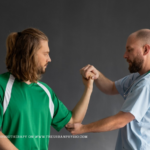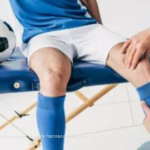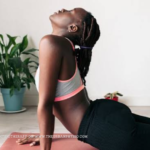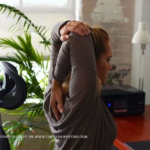Your fever’s gone, your tests are normal — but your energy just won’t come back? You’re not alone. Millions of people worldwide are discovering that beating the infection is only half the battle. The other half? Getting your body back to its pre-illness strength and stamina.
Here’s what most people don’t realize: rehabilitative physiotherapy for post-viral recovery is often the missing piece that can transform your slow, frustrating recovery into a structured path back to full health.
Why Your Body Feels Like It’s Running on Empty
Post-viral fatigue isn’t “all in your head” — it’s a real physiological response that affects multiple body systems:
The Hidden Impact of Viral Infections:
- Muscle deconditioning: Bed rest and reduced activity cause rapid muscle weakness
- Cardiovascular changes: Your heart and lungs work less efficiently after illness
- Nervous system disruption: Viral infections can affect nerve function and energy regulation
- Inflammatory aftermath: Lingering inflammation continues to drain your energy
- Sleep pattern disruption: Poor sleep quality prevents proper recovery
Common Post-Viral Symptoms:
- Extreme fatigue that doesn’t improve with rest
- Shortness of breath during simple activities
- Muscle weakness and joint stiffness
- Brain fog and difficulty concentrating
- Exercise intolerance (feeling exhausted after minimal activity)
- Chest tightness or breathing difficulties
The Physiotherapy Solution Most People Miss
While doctors focus on treating the infection, physiotherapists specialize in restoring your body’s function. Here’s how rehabilitative physiotherapy addresses post-viral recovery:
Comprehensive Assessment:
- Functional capacity testing: Measuring your current stamina and strength levels
- Respiratory evaluation: Checking lung function and breathing patterns
- Cardiovascular screening: Monitoring heart rate response to activity
- Muscle strength analysis: Identifying areas of weakness and imbalance
Targeted Recovery Strategies:
- Graduated exercise programs: Slowly building stamina without overwhelming your system
- Breathing rehabilitation: Restoring lung capacity and efficient oxygen use
- Energy conservation techniques: Learning to manage fatigue effectively
- Sleep hygiene coaching: Improving recovery through better rest
Evidence-Based Exercises for Post-Viral Recovery
Phase 1: Gentle Reactivation (Weeks 1-2)
1. Diaphragmatic Breathing
- Lie down, one hand on chest, one on belly
- Breathe slowly through your nose, expanding your belly
- Exhale through pursed lips for twice as long as inhale
- Practice 5-10 minutes, 3 times daily
- Improves oxygen efficiency and reduces shortness of breath
2. Gentle Range of Motion
- Neck rolls, shoulder shrugs, ankle circles
- Hold each stretch for 10-15 seconds
- No forcing or pain
- Prevents stiffness and maintains joint mobility
Phase 2: Building Foundation (Weeks 3-4)
3. Supported Sitting Exercises
- Seated marching in place (lift knees alternately)
- Arm circles while seated
- Seated torso twists
- Start with 2-3 minutes, gradually increase
- Builds core strength without overwhelming the system
4. Wall Push-Ups
- Stand arm’s length from wall
- Place palms flat against wall
- Push away and back slowly
- Start with 5 repetitions, build to 15
- Strengthens upper body without strain
Phase 3: Progressive Strengthening (Weeks 5-8)
5. Interval Walking
- Walk for 2 minutes, rest for 1 minute
- Repeat 3-5 cycles
- Gradually increase walking time
- Monitor your energy levels
- Builds cardiovascular endurance safely
6. Resistance Band Exercises
- Chest presses, rows, and leg extensions
- Use light resistance initially
- Focus on controlled movements
- 2-3 sets of 10-12 repetitions
- Rebuilds muscle strength progressively
Breathing Exercises That Actually Work
The 4-7-8 Technique
- Inhale for 4 counts
- Hold for 7 counts
- Exhale for 8 counts
- Repeat 4 times, twice daily
- Activates the parasympathetic nervous system for better recovery
Pursed Lip Breathing
- Inhale through nose for 2 counts
- Exhale through pursed lips for 4 counts
- Use during activities that cause shortness of breath
- Improves lung emptying and reduces breathlessness
Red Flags: When to Seek Medical Attention
Stop exercises and consult a healthcare provider if you experience:
- Severe shortness of breath that worsens
- Chest pain or pressure
- Irregular heartbeat or palpitations
- Dizziness or fainting
- Symptoms that significantly worsen after activity
The Recovery Timeline Reality Check
Week 1-2: Focus on rest and gentle movement Week 3-4: Introduce light structured exercise Week 5-8: Gradually increase activity levels Week 9-12: Return to more normal activity patterns
Remember: recovery isn’t linear. You might have good days and setbacks. The key is consistency, not perfection.
Your Path Back to Full Strength
Post-viral recovery requires patience, strategy, and often professional guidance. What feels like weakness or laziness is actually your body’s need for structured rehabilitation.
Physiotherapy isn’t just for injuries — it’s a powerful tool for rebuilding your health after any illness that has left you feeling depleted. The right approach can mean the difference between months of struggling and a confident return to your pre-illness life.
Don’t let post-viral fatigue become your new normal. Your body has an incredible capacity to heal and strengthen — it just needs the right roadmap to get there.





